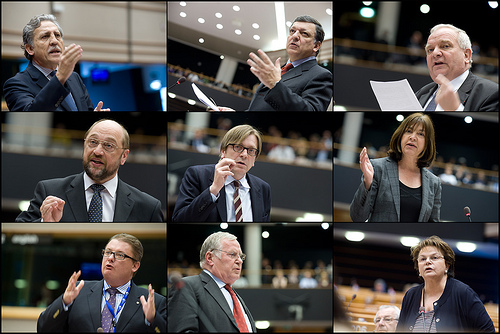Higher Eurozone Interest Rates May Be a Foreign Investment Trap

Please note that we are not authorised to provide any investment advice. The content on this page is for information purposes only.
12 May 2011.
One of the positives of raising interest rates is that they attract foreign capital. On the surface, this makes complete sense. If U.S. rates are near zero and the European Central Bank raises its main rate to 1.25%, the current level, then anyone with a few functioning brain cells can see there is more cash to be had on European money markets than in America.
12 May 2011.
One of the positives of raising interest rates is that they attract foreign capital. On the surface, this makes complete sense. If U.S. rates are near zero and the European Central Bank raises its main rate to 1.25%, the current level, then anyone with a few functioning brain cells can see there is more cash to be had on European money markets than in America.
In fact, after hinting at more rate hikes to come, European central banking brainiacs might have even hoped for a rise in foreign investment as a pleasant side effect of increased lending costs. That may never happen.
As expected, the ECB held pat on rates last week, but President Jean-Claude Trichet sucker punched salivating investors when he failed to utter the hawkish code phrase “strongly vigilant” about eurozone inflation, thereby deflating hopes for another increase next month. Those who held the euro voted against Trichet’s dovishness with an avalanche of sell orders: The single currency shed some four cents following the rate indecision, a sobering two percent change in sentiment.
So, the ECB has checked fire for the moment, an understandable stance considering its own economic house is ablaze. With Greece imploding – ratings agencies have yet again lowered their grades for the Hellenic republic’s creditworthiness – a hike would make monetary policy makers look callous and could nudge troubled economies in the wrong direction. The edge of Europe still suffers low growth and high deficit spending, and while that’s not going away anytime soon, eurozone inflation ballooned to 2.8 percent in April, well past the ECB’s price stability line in the sand of 2 percent. This raises fears that growth economies like Germany could overheat on a continent flush with cheap cash, at least for those not in danger of defaulting.
The specter of rising consumer prices means the ECB will eventually be forced to resume its rate increases, but foreign investors who want to take advantage of more expensive money may be better off steering clear of anything priced in euros and the currency itself.
Economists at French Bank Crédit Agricole have presented an interesting scenario that should scare away foreign investment despite expected ECB tightening. Focusing on Spain, the number crunchers set out to present an argument that a series of interest rate hikes through 2012 would have limited damage on countries on the periphery partly due to a possible unwillingness of banks to immediately pass on the increased cost of money. The report suggests that the weak economies on the edge of Europe will in fact be stronger at the end of next year than they are now.
This sounds like good news for a world currently fearing a debt crisis in Europe, but what stands out in the report is the predictions the economists used for their models. The Crédit Agricole scenario plots a total ECB interest rate increase of 150 basis points by the end of next year, which would raise the ECB’s main rate to 2.50 percent. With the main U.S. interest rate near naught and the FED giving little indication it will tighten its monetary policy, normally investors would be dropping dollars and other currencies out of planes over the Continent’s posh banking quarters to take advantage of the premium lending rates.
This would be a no-brainer if it were not for the second half of the scenario, which makes investing dollars in Europe akin to dumping them in a shredder. The economists also factored in a fall in the euro/dollar exchange rate to 1.18. Currently, a euro gets you about $1.43, so they are predicting a decline – no, a crash – of nearly 18 percent in less than two years. The report was from last month, when the economist were already forecasting an “8-10 percent depreciation of the euro in nominal effective terms,” with expectations of a 5 percent decline by the end of this year.
Talk about the “wow” factor. If the Crédit Agricole prevision holds true, then foreign investors, at least those with dollars, who want to piggyback the higher cost of eurozone credit will be taking a beating when they convert their assets back into greenbacks.
A currency decline at a time of rising interest rates smacks of counterintuitiveness, but that doesn’t mean it can’t happen, especially if investors believe a central bank is debasing its own money. Like, let’s say, by buying Greek and Portuguese bonds that may not be worth anything when they mature.
Eric Culp
EconomyWatch.com




